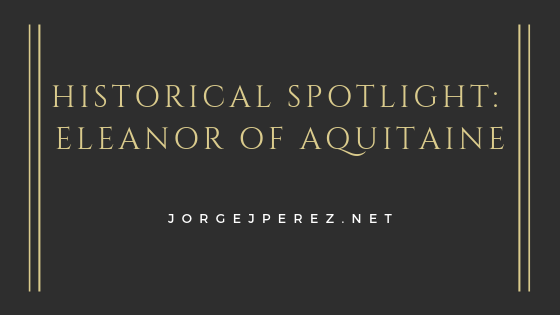There have been a number of powerful women throughout history who have wielded great authority, military might, and political prowess. However, few can hold a candle to the force that was Eleanor of Aquitaine.
Early Life
Born in 1122 to renowned Duke William X, Eleanor was well-educated in languages, philosophy, mathematics, the arts, and athletics such as equestrianism. Following the death of her only brother, at age 15, Eleanor became the heir to what was considered to be one of the wealthiest portions of land in the known world: The Aquitaine. Because of this, Eleanor was sought after by many rulers, and within the year, she was married for the first time.
Queen of France
Her initial marriage did not make her queen, but within days of marrying Louis, the reigning king died, granting them the status of king and queen of France. Their union was highly political and motivated by land acquisition and power, and the two suffered many arguments and power struggles for several years. Eleanor disagreed with him on policies and militaristic moves, but she accompanied him on the Second Crusade, purportedly leading a large number of other women through the battlefields, tending to the wounded while armed with lances.
After affairs and immeasurable strife, Eleanor sought an annulment, claiming that she and Louis were related in a way that the church forbade. It was granted in 1152, and power of the Aquitaine was restored to Eleanor.
Queen of England
Within two months of her annulment, Eleanor married Henry of Anjou, who was in line for the English throne. By 1154, his father died, and the two became the rightful rulers of England. While their marriage was more successful than her previous arrangement, the two fought frequently. She bore him eight children, one of whom became known as Richard the Lionheart.
In 1173, Eleanor cooperated with her son “Young” Henry in arranging a coup to overthrow the king. However, they were found out before they could enact their plans, and Eleanor was imprisoned for treason. She was released following Young Henry’s death, and the king permitted her to resume some of her royal duties under supervision.
After Henry’s Death
Richard ascended to the throne and restored Eleanor’s freedom before naming her as regent. She brandished her political aptitude when defending his lands and negotiating his release after he was captured by Germany. Upon his death, John was named king, and she served as an envoy between England and France.
Eleanor outlived both husbands and nine of her children. She retired to an abbey at Fontevraud and lived out the remainder of her days there in peace, dying at the impressive age of 82.
Eleanor’s legacy as one of the most desirable and powerful women in the Middle Ages is one that has inspired works of fiction and nonfiction alike. Though she may not be the most well-known figure in history, her remarkable accomplishments, skills, and influences are certainly worth remembering.
___
Jorge J. Perez is an attorney in South Florida. He is a self-professed history buff. Visit JorgeJPerez.net often to learn more.

